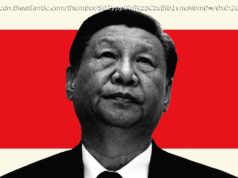China is entering a beautiful deleveraging period that, like the US, will need to see growth and currency stability to succeed.
From 2009 to 2012, the US entered an era of “ beautiful deleveraging, ” a Morgan Stanley report recently noted, citing “a respected client” who coined the phrase. The concept was a key point of Bridgewater’s Ray Dalio and his debt cycle analysis. Now fast forward to China, where economic central planners are hoping the Asian powerhouse can engineer a similar feat as its leveraged economy. Doing so might require low global interest rates, which could be one reason China has significantly ramped up is purchases of US Treasuries. The moves come as China’s debt was recently downgraded amid concerns over leverage.
China is considered one of the powerhouse economies driving world growth, and that important role in the global economy may increase.
China could become a major contributor to global liquidity, Morgan Stanley analysts Hans Redeker, Sheena Shah and Gek Teng Khoo noted in a June 7 research piece.
China playing an increasingly important role in global market liquidity may seem a natural next step. When the nation was admitted into the SDR currency basket used in international trade, it marked an important milestone for China’s ascendance on the global market stage. But at the time concerns persisted about the lack of free market embrace the nation exhibited, particularly with regards to its currency. Redeker, Shah and Khoo pick up on the concept and put it into a different perspective.
“Often overlooked is the impact of quasi currency pegged environments in projecting global liquidity conditions, ” they noted. “An important assumption within this framework is that China requires strong external economic growth to be successful with its deleveraging strategy.”
It is the strong economic growth aspect of the equation that China is depending on to ensure that they engage in a smooth landing. It is this smooth landing amid high debt levels that has analysts attention.
Morgan Stanley noted Asian investor feedback is “interesting” when compared to the rest of the world. While Asian investors see the Chinese currency increasing in value, “investors from the rest of the world point towards high and unsustainable private sector leverage imposing long-term stability risks.”
A rising currency is often correlated with rising interest rates, which is something China can ill afford at this point.
“China may now also head towards ‘beautiful deleveraging’ but this strategy can only be successful if the rest of the world keeps its current economic expansion intact, ” Redeker, Shah and Khoo observed.
Looking at the US model for “ beautiful deleveraging, ” a few components are clear. Low interest rates and strong economic growth were factors in providing a cushion for the deleveraging. If China is following the same path it will likely require the same input values. The US model was “a strategy build on exuberant liquidity conditions and low global funding costs, ” factors that China wants to see remain in place on a global level.
To accomplish this beautiful deleveraging, they have continued to purchase US Treasuries, reversing the previous policy of shunning US debt instruments.
In 2016, the Chinese cut their Treasury holdings by $188 billion, at the time sending nervous shockwaves through yield curve investors. In the first quarter of 2017, however, China, the second largest holder of US debt after Japan, boosted its exposure to Treasuries by $29 billion, bringing their total holdings to $1.088 trillion as of May 15. On Tuesday, China indicated it was prepared to purchase more Treasuries once its currency had stabilized.
“China seems to know how essential globally low DM funding costs are for the success of its de-leveraging strategy, ” the Morgan Stanley report observed. Ultimately their actions are viewed as investor friendly. “With China announcing an ambitious reform program safeguarding deleveraging without significant losses by transferring ‘private’ into state owned liabilities then China’s asset markets could become a magnet for global investors.”
The result could be low interest rates for longer with support for risk asset s continuing.






